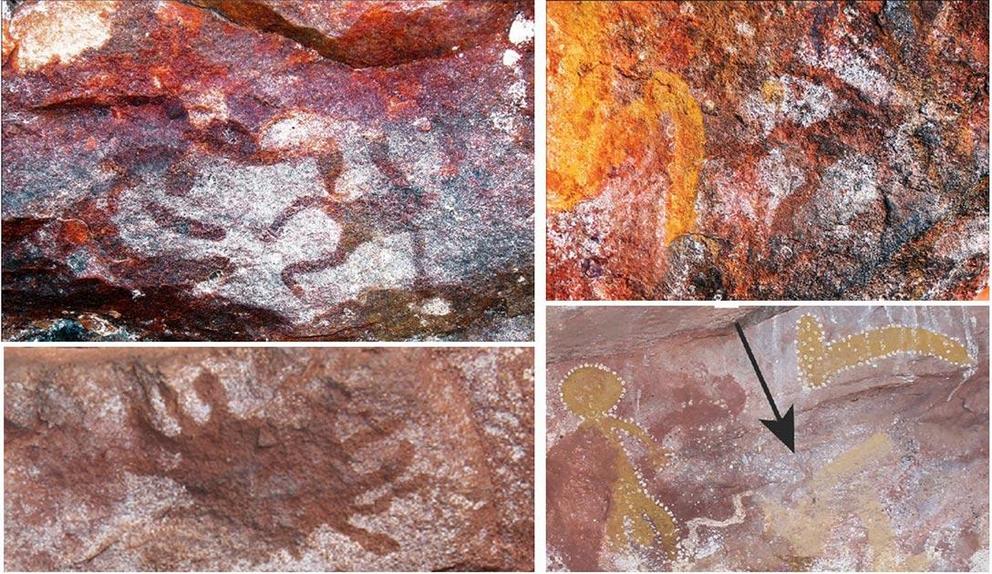Study reveals rare Aboriginal rock art’s link with sorcery and magic
Assortment of the Aboriginal rock art found at the Yilbilinji site in Limmen National Park, Australia.
In Australia, a team of researchers have made some dramatic new findings regarding one of the world’s most important rock art assemblages. This Aboriginal rock art is among the very few examples of miniature motifs found anywhere in the world. The study used ethnographic studies and experimental archaeology in innovative ways to understand the art and its social and cultural role in indigenous Australian society.
The globally important artworks are in the Yilbilinji Rockshelter in the Limmen National Park, Northern Territories, Australia. A team of anthropologists worked with park rangers and members of the Marra Aboriginal people to survey the rock art. The cave is owned by the Marra group and it has traditionally played a very important role in their history and beliefs.
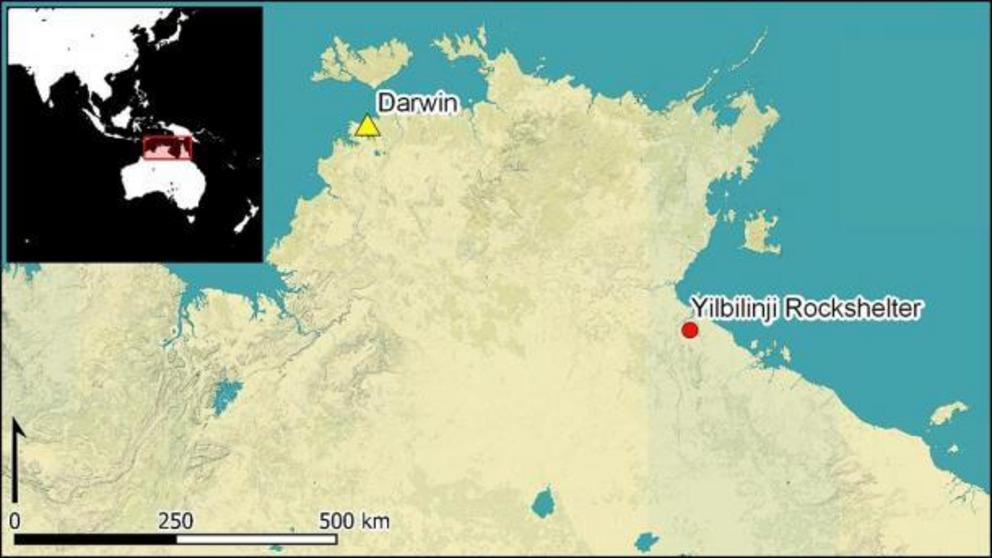 Map of the Yilbilinji Rockshelter in relation to Darwin in Australia, where the Aboriginal rock art can be found.
Map of the Yilbilinji Rockshelter in relation to Darwin in Australia, where the Aboriginal rock art can be found.
Important Rock Art Images
In 2017, the researchers surveyed over 300 images, including paintings, prints and stencils. What intrigued the team were the seventeen miniature stenciled motifs that were “created using a white spray and are located in the right hand and the center of the shelter,” reports Antiquity. They are extremely rare and only two other assemblages have been found, one also in Australia and another in Indonesia.
The images include some four doll-like human figures, one with a shield and the rest with boomerangs. There are also some images of long-necked turtles and their tracks and a crab. There are also some geometric designs such as wavy lines. A European pipe has also been identified. All of these motifs are common in indigenous Australian art. Dr. Liam Brady who took part in the study told Ancient Origins that “they would probably be no more than 400-500 years old, but this is only speculative and requires detailed work.”
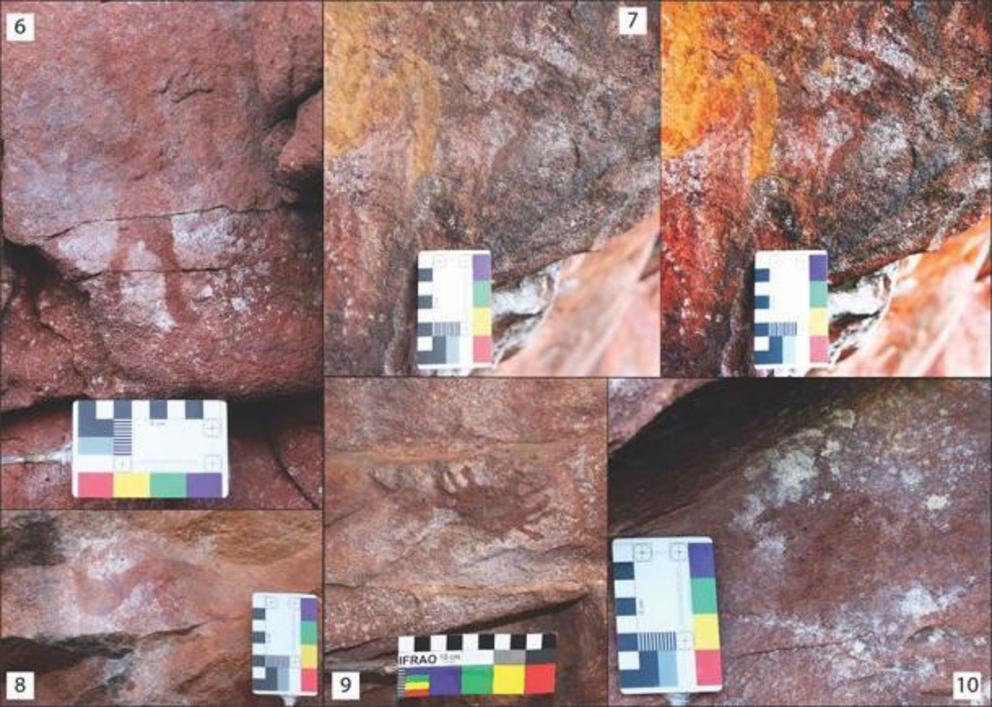 Aboriginal rockart: 6) anthropomorph holding a boomerang; 7) anthropomorph holding a shield (left: original photograph, right: digital enhancement using Adobe Photoshop); 8) boomerang; 9) crab; 10) long-neck turtle. (photographs and enhancement using Adob
Aboriginal rockart: 6) anthropomorph holding a boomerang; 7) anthropomorph holding a shield (left: original photograph, right: digital enhancement using Adobe Photoshop); 8) boomerang; 9) crab; 10) long-neck turtle. (photographs and enhancement using Adob
The Mystery of the Motifs
An Antiquity Press Release states that “indigenous Australians have stenciled full-size body parts, animals, and objects to make art for millennia.” The miniature rock art is too small to have been made in this way and this prompted the team to investigate how they were made. The team used experimental archaeology to replicate the methods used to create the tiny images.
A stencil was used to create the images and paint made “from Kaolin clay and water was applied to a paintbrush and flicked over and around the mode,” reports Antiquity. The researchers noted that most of the assemblage “comprised of motifs with well-rounded or curved edges,” according to Antiquity. It appears that some malleable substance was used to form the stencils.
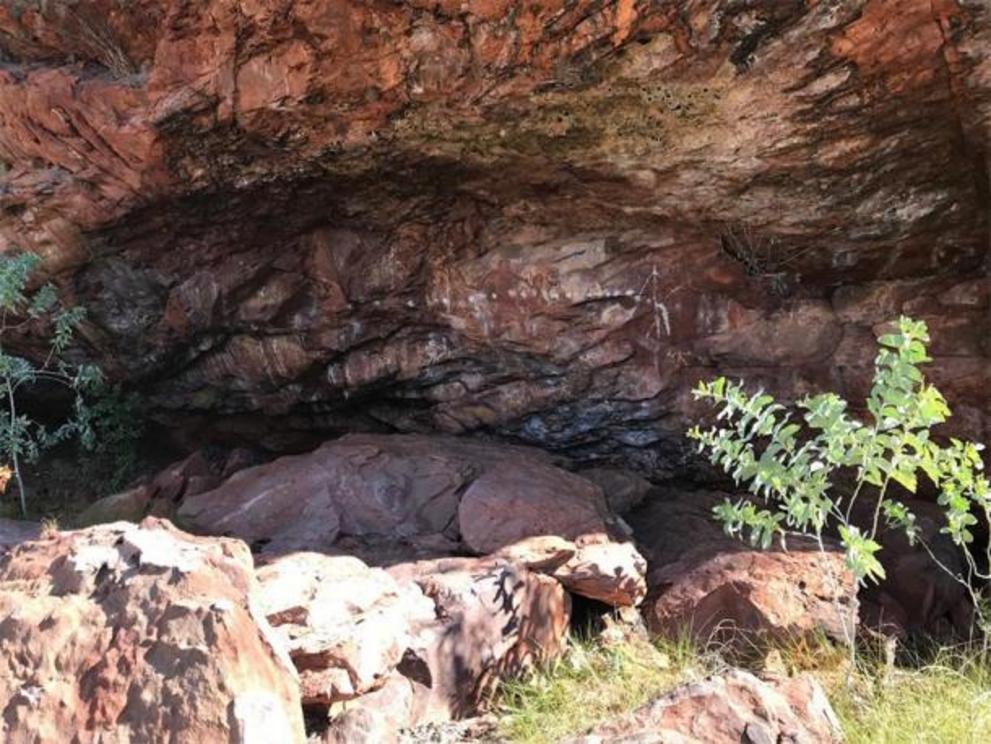 Yilbilinji Aboriginal rock art site in Limmen National Park.
Yilbilinji Aboriginal rock art site in Limmen National Park.
Beeswax and Stencils
The experts knew that mud and clay might have been used to make the stencils. However, ethnographers had recorded that right until the 1980s, groups of indigenous Australians had carried balls of beeswax during their wanderings. The beeswax was heated and softened over hot coals, based on ethnographic descriptions of life at Marra bush camps. The beeswax was used in a variety of ways, to fix harpoons or to make children’s toys.
It appears that the beeswax was fashioned into the images. Dr. Brady told Ancient Origins that “based on our interpretation, the holders of the beeswax chose to shape a ‘thing’ (animals, humans, geometric shapes etc.) and then placed it on a rock wall and sprayed pigment around it.” The beeswax allowed the artists to create small but detailed images and meant that they could easily affix them to the rock-shelter.
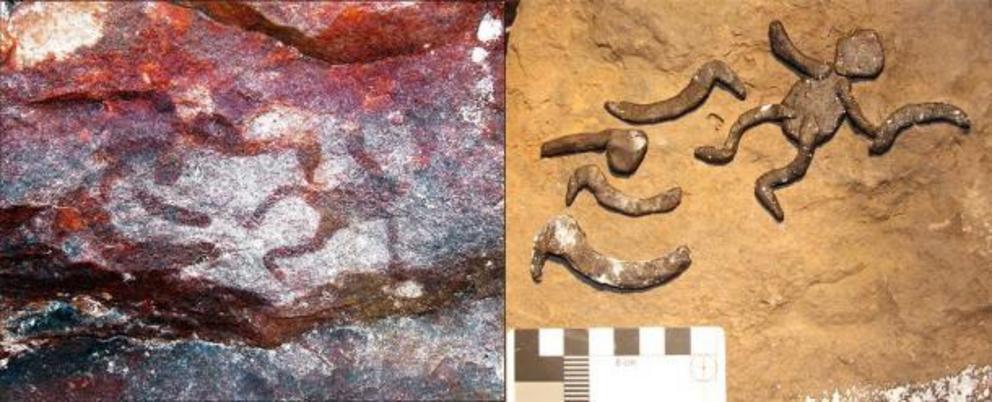 Left: Some of the Aboriginal rock art found at the Yilbilinji site in Limmen National Park. Right: The archaeologists attempting to replicate the anthropomorph and boomerang motif panel
Left: Some of the Aboriginal rock art found at the Yilbilinji site in Limmen National Park. Right: The archaeologists attempting to replicate the anthropomorph and boomerang motif panel
The next phases of the research involved identifying the motives for producing the tiny artworks and their social context. It was suggested that they were used by artists as practice pieces or were made by children. However, the rock shelter is very important in the local culture and is associated with the Ancestral Being, whom the Marra believe visited the rock shelter. Dr. Brady stated that “the Marra were making these miniature stencils in their landscape that is filled with the memories of their ancestors who continue to care for it,” according to an Antiquity.
Aboriginal Rock Art Linked with Sorcery
The Marra’s beliefs about the cave led the team to believe that the images were associated with magic and sorcery. A neighboring Aboriginal group believed until relatively recently that stencils had supernatural powers. Antiquity reports that men with the right spirit who sang “potent songs over the motifs would empower the motifs to ensorcell and kill people.” Moreover, beeswax is regarded by many indigenous Australians as having supernatural associations.
However, there is no evidence for this in the Marra culture, but it was observed that many men were afraid of the images on the rock shelter until the 1970s. This would strongly suggest that the miniature images had an association with sorcery and magical practices. These images were also of great social importance. Dr. Brady exclusively revealed to Ancient Origins that “rock art isn’t an isolated phenomenon, it is tied up with many different aspects of Marra life such as exchange, social interaction and gender.”
Dr. Brady also told Ancient Origins that “we have recently discovered two other miniature and small-scale motifs at a nearby site, which suggests this production technique is not restricted to Yilbilinji.” Further work may reveal even more images in the Northern Territories. This could greatly enrich experts understanding of this rare form of rock art in Australia and indeed elsewhere.

